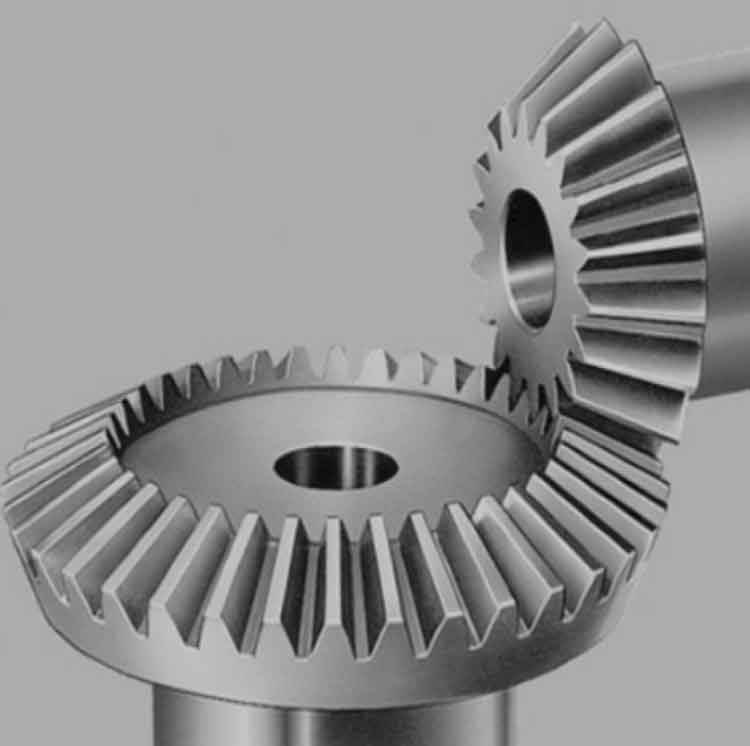Straight bevel gear manufacturing has seen various innovations and advancements over the years, leading to improved precision, efficiency, and quality in the production process. Here are some key innovations and best practices in straight bevel gear manufacturing:

1. Computer-Aided Design (CAD) and Simulation:
CAD software enables precise and efficient design of straight bevel gears, allowing for accurate tooth profiles, optimized gear geometry, and reduced design time. Simulation tools can analyze gear performance, stress distribution, and contact patterns, aiding in the selection of appropriate manufacturing parameters.
2. CNC Machining:
Computer Numerical Control (CNC) machining has revolutionized straight bevel gear manufacturing. CNC machines provide high precision and repeatability in gear production, ensuring consistent gear quality. Advanced CNC machining centers with multi-axis capabilities can produce complex straight bevel gears with tight tolerances.
3. Advanced Gear Cutting Methods:
Innovations in gear cutting methods have enhanced the accuracy and efficiency of straight bevel gear manufacturing. High-speed cutting (HSC) techniques, such as high-speed milling and high-speed grinding, offer increased productivity and improved surface finish. These methods allow for precise and fast material removal, resulting in high-quality gear teeth.
4. Heat Treatment Techniques:
Heat treatment is a critical step in straight bevel gear manufacturing to enhance the gear’s hardness, strength, and durability. Advancements in heat treatment techniques, such as induction hardening and carburizing, have improved the control over heat treatment processes, resulting in consistent and optimized gear properties.
5. Quality Control and Inspection:
Strict quality control and inspection procedures ensure the reliability and performance of straight bevel gears. Automated inspection technologies, such as coordinate measuring machines (CMM) and gear measurement systems, allow for precise dimensional measurements and evaluation of gear tooth profiles. Non-destructive testing methods, such as magnetic particle inspection and ultrasound testing, can detect potential defects in gears.
6. Materials and Coatings:
Innovations in materials and coatings contribute to the improved performance of straight bevel gears. Advanced alloy steels and specialized materials offer enhanced strength, wear resistance, and fatigue properties. Surface treatments, such as nitriding and DLC (Diamond-Like Carbon) coatings, improve the gear’s surface hardness, reduce friction, and enhance durability.
7. Process Optimization and Automation:
Continuous process improvement and automation help streamline straight bevel gear manufacturing. Optimizing the manufacturing workflow, reducing setup times, and implementing automated material handling systems enhance productivity and reduce costs. Robotics and intelligent automation technologies are increasingly used to automate repetitive tasks and improve manufacturing efficiency.
8. Sustainability and Green Manufacturing:
Manufacturers are increasingly adopting sustainable practices in gear manufacturing, such as optimizing energy consumption, waste reduction, and environmentally friendly processes. Implementing eco-friendly lubricants, recycling and reusing materials, and reducing emissions contribute to greener manufacturing processes.
By embracing these innovations and best practices, straight bevel gear manufacturers can achieve higher precision, efficiency, and quality in gear production. These advancements contribute to the overall performance, reliability, and durability of straight bevel gears in various applications, including automotive, industrial machinery, aerospace, and more.
